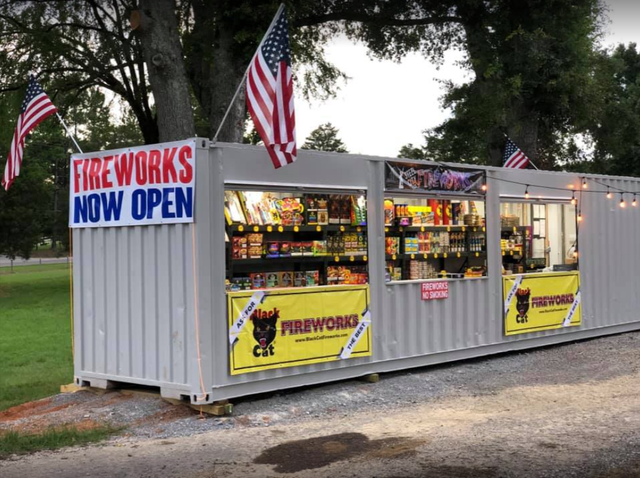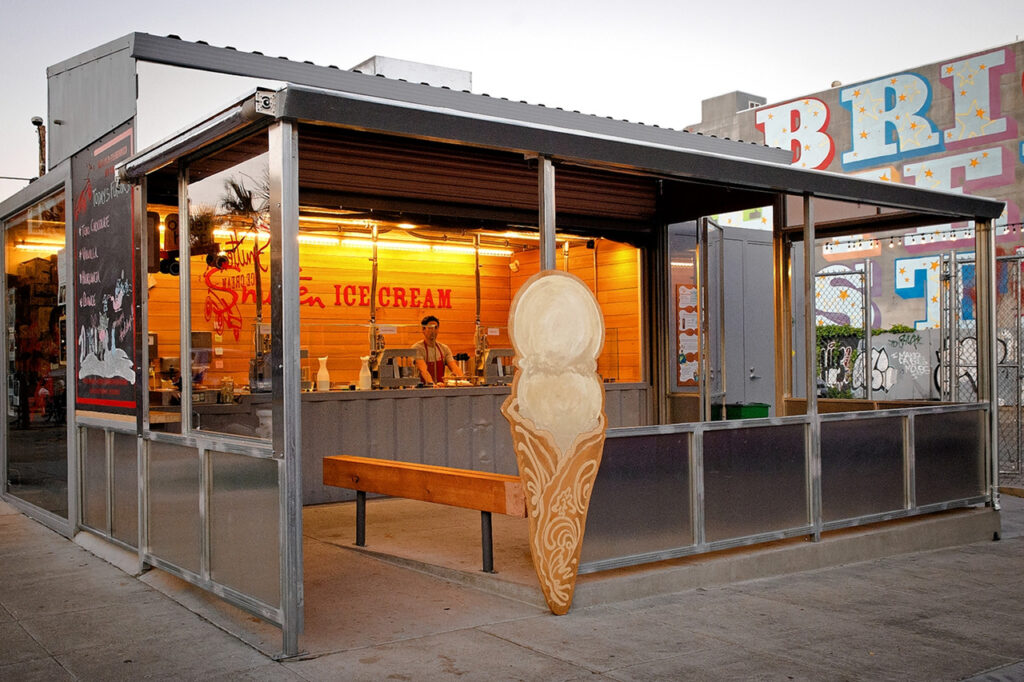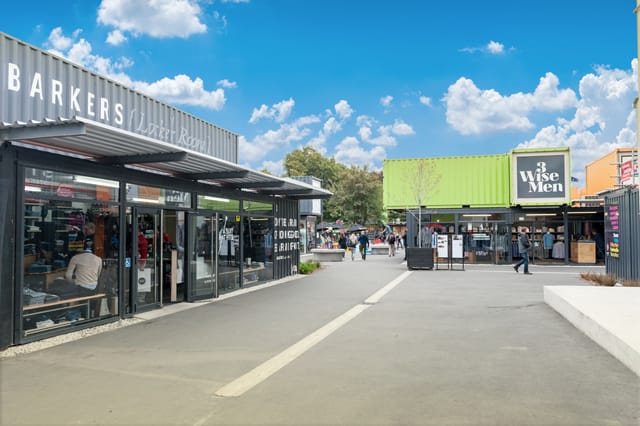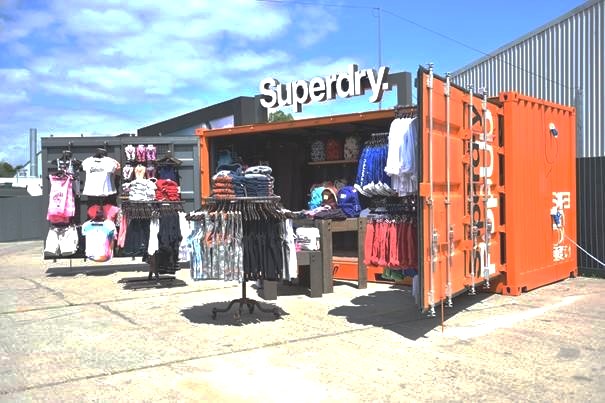Have you ever thought about reimagining the typical retail experience in a way that’s not only practical but also eye-catching? The concept of using a shipping container for a retail store is gaining traction for its innovative and sustainable approach. It’s amazing how a simple metal box can be transformed into a vibrant space filled with creativity and business potential. Let’s take this opportunity to explore how you can make the most out of a shipping container, turning it into an exceptional retail environment that can capture the attention and interest of your customers.

Understanding the Basics of Shipping Containers for Retail
Before you embark on this exciting journey, it’s important to grasp the basic idea behind using shipping containers as retail spaces. Shipping containers, typically used for transporting goods across the globe, are rectangular metal structures usually made from steel or aluminum. They come in various sizes, but the standard dimensions are 20 feet and 40 feet in length.
Advantages of Using Shipping Containers
The benefits of using shipping containers for retail are numerous and appealing. Firstly, they are cost-effective, offering a significant saving compared to constructing a traditional brick-and-mortar store. They are also modular and portable, providing flexibility if you wish to move your store or expand its footprint.
- Cost Efficiency: A fraction of the cost to construct a traditional building.
- Durability: Made from strong steel, ensuring longevity.
- Portability: Easily relocatable to places with high foot traffic.
- Eco-Friendly: Repurposing containers reduces waste and conserves resources.
Potential Challenges
Of course, there are some challenges to consider. These include climate control, getting the necessary permits, and ensuring accessibility for all potential customers. Understanding these challenges early can help you plan effectively.
Designing Your Shipping Container Retail Store
The design phase is crucial as it will influence not only the aesthetic appeal but also the overall functionality of your store. When crafted creatively, a well-designed container store can stand out as an architectural masterpiece and a magnet for customers.
Space Optimization
Maximizing space is essential in a shipping container, given its limited size. Innovative storage solutions such as vertical shelving and multi-purpose furniture can help you make the most out of the available space. Draw a floor plan and think about how products can be displayed efficiently without overcrowding.
Aesthetic Appeal
Your store’s appearance will be a significant draw for customers. Consider using bright, inviting colors or striking graphics on the exterior to grab attention. Inside, focus on lighting solutions that enhance the display and create a welcoming atmosphere.
Customization Options
The beauty of using a shipping container lies in its customization potential. You can add windows, doors, and even additional containers to create a unique layout. Customize the façade to reflect your brand’s identity distinctly.
Practical Setup of a Shipping Container Retail Store
Once the design is set, the actual setup comes into play. This involves everything from site selection to installation of utilities and ensuring the store is customer-ready.
Site Selection and Preparation
Selecting the right location is key. Look for areas with high foot traffic and good visibility. Ensure the site has the essentials such as water, electricity, and internet access. Some preparation may be required to level the ground and ensure the container is secure.
Climate Control
Ensuring customer comfort inside your store is essential. Insulation is critical for temperature regulation, while adding air conditioning or heating solutions depending on your climate can maintain a pleasant shopping environment.
Utilities and Internet
Install necessary utilities like plumbing for customer restrooms and a reliable internet connection for transaction processing and digital displays. Solar panels can be an eco-friendly option for power supply.
Legal Considerations and Permits
Navigating the legal landscape is as important as the creative and logistical aspects of setting up your container store. Different regions may have varying requirements; hence, it’s important to be informed.
Permits Required
Most municipalities require permits for using a shipping container as a retail space. This process can vary, but generally includes obtaining approvals related to zoning, construction, and fire safety.
Understanding Zoning Laws
Zoning laws dictate where you can place your container store. Research local zoning regulations to ensure you’re compliant, avoiding any unexpected legal issues down the line.

Innovative Uses to Enhance Retail Experience
Transforming a shipping container into a retail store offers unique opportunities to enhance the retail experience, enabling your store to stand out in the competitive market.
Pop-Up Shops
One of the most innovative uses of shipping containers for retail is as pop-up shops. They create a sense of urgency and exclusivity, drawing in foot traffic quickly. Pop-up shops are excellent for seasonal sales, special collections, or brand collaborations.
Store Partnerships and Collaborations
Consider sharing your space with complementary businesses to create a diverse shopping experience. This could be through hosting guest brands or working with local artists for product showcases.
Hosting Events and Workshops
A container store can double as an event space, perfect for hosting workshops or community events. This not only draws in customers but also strengthens community ties and increases brand visibility.
Sustainable Practices in Container Retailing
Sustainability is more than just a trend—it’s a necessity for future retail operations. Using shipping containers already aligns with sustainable practices by repurposing materials.
Use of Recycled Materials
Incorporate recycled materials in your interior design. From reclaimed wood accents to refurbished furniture, these elements can add character to your store.
Energy Efficiency
Implement energy-efficient solutions such as LED lighting and solar panels. Not only do they reduce the carbon footprint, but they also cut down on long-term operational costs.
Waste Management
Implementing a robust waste management strategy is crucial. This may include recycling programs for products and packaging, as well as initiatives to educate customers on sustainable practices.

Case Studies of Successful Container Stores
Understanding how others have successfully utilized shipping containers can provide insights and inspiration for your concept.
Example 1: Lululemon’s Local Pop-Ups
Lululemon has effectively utilized shipping containers for pop-up stores, bringing their unique retail experience to various locations. By setting up in high-traffic areas, they successfully increased brand awareness and customer engagement.
Example 2: Boxpark in London
As one of the most famous examples, Boxpark has created an entire shopping and dining experience out of shipping containers. Their innovative approach has not only become a popular destination but also a platform for small and independent brands to thrive.
Example 3: Starbucks’ Sustainability Commitment
Starbucks has embraced shipping containers to emphasize sustainability. Their stores made out of reclaimed shipping containers showcase environmentally friendly design and construction practices, aligning with their business values.
Tips for Maintaining a Shipping Container Retail Store
Once your shipping container store is up and running, maintenance becomes key to ensuring it remains a functional and inviting space.
Regular Inspections
Conduct regular inspections to identify and resolve any issues related to rust, leaks, or structural damage. Keeping the container in good condition prevents costly repairs in the long run.
Optimizing Display and Layout
Consistently refreshing your product display and store layout can keep the store looking new and engaging. This encourages repeat visits from customers who are curious to see what’s new.
Customer Feedback
Actively seek feedback from customers on their shopping experience. Understanding their perspective can provide valuable insights for further improvements to product displays, layouts, and overall store ambiance.

Closing Thoughts on Shipping Container Retail
The adaptability and charm of shipping containers make them a compelling choice for modern retail. As you venture into this innovative space, your creativity and willingness to embrace new ideas will play a critical role in your success. By leveraging the advantages of shipping containers, you can create a unique retail environment that resonates with customers while being mindful of environmental responsibilities.
In this ever-evolving retail landscape, thinking outside the box—quite literally, in this case—can open up a world of possibilities. Whether you wish to roll out an eye-catching pop-up or establish a sustainable permanent store, shipping containers offer a versatile solution. With thoughtful planning and execution, your container store can become a cornerstone of modern retailing, drawing customers in with its uniqueness and innovation.

